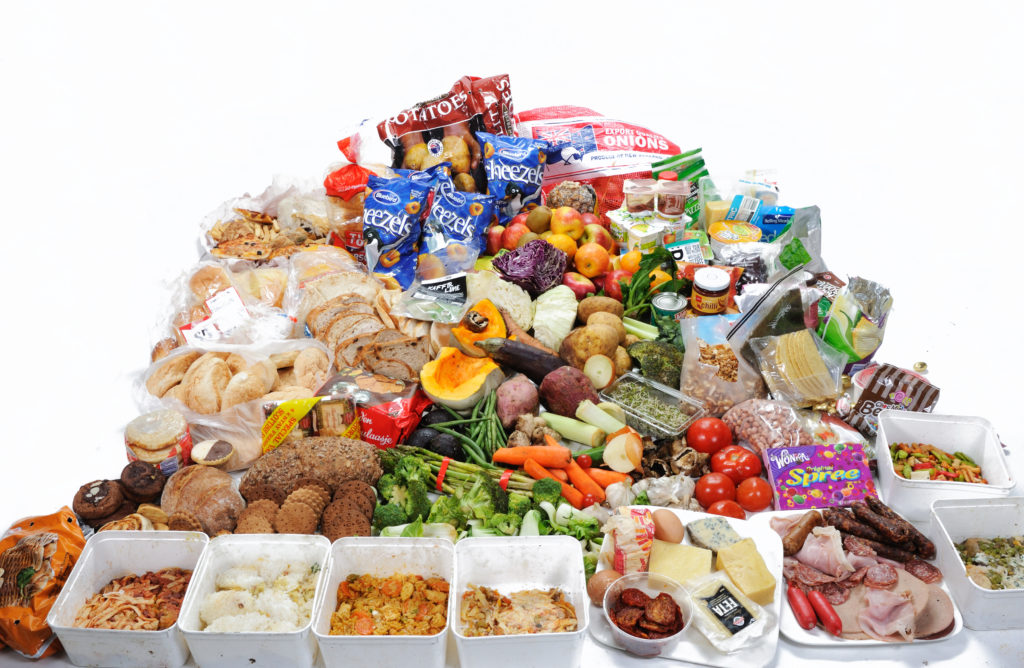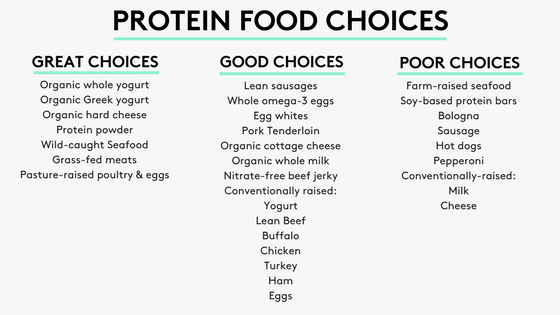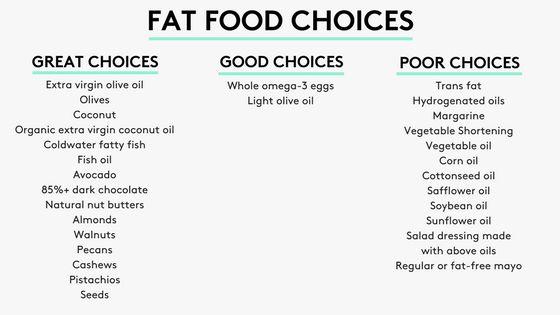
In my opinion, learning how to track macronutrients is the most effective way to gain control over your physique for life.
Note: This is not medical advice, just my experience through years of study, self-practice and real world implementation to transform my body and those of my clients. Always consult your physician before undergoing a new diet regimen.
Now, with that out of the way…
This complete guide covers…
- What are macronutrients?
- Why track macros?
- When to track and when not to track
- Protein, Carbs, Fat & Alcohol
- How to count macros
- How and why to use a food scale
- Macros FAQ
What Are Macronutrients A.K.A. Macros?
Macronutrients are in essence, food. And, more specifically, they are the substances/makeup of that food.
Macros = calories.
There are 3 macronutrients (technically 4, including alcohol)…
- Protein – 4 calories per gram
- Carbohydrates – 4 calories per gram
- Fat – 9 calories per gram
- Alcohol – 7 calories per gram
Why Track Macros?
In my opinion, learning how to track macros is the best and most effective way to gaining control over your physique for life.
Tracking macros isn’t easy if you’ve never done it before; it’s tedious and time consuming initially.
But, once mastered, you’ll have a clear understanding of how much food your body needs for fat loss, maintenance, and muscle gain.
The overwhelmingly most significant benefit of learning how to count macros is that over time, you become intimately familiar with portion sizes, how much food your body requires, and you’ll be able to “eyeball” things and get pretty close to estimating its actual nutritional value.
Meaning you won’t have to track macros or weigh things forever. You’ll be able to do it by experience and feel.
You’ll get to “know” your body and gain control over your physique.
You’ll be bringing awareness to what you’re eating, how much you’re eating, and how your body responds to that food.
There will be no more guessing if you’re eating the right amount or not, because you’ll know exactly how much to eat for your goals.
When You Should Consider Tracking Macros
- If you feel like you eat “healthy” or a “certain amount” yet aren’t losing weight, gaining weight or reaching your fitness goals.
- If you have specific fat loss or muscle gain goals and want to “get it right.”
- If you’re super nerdy and derive enjoyment from how much food and what types of food you put in your body.
- If you want to gain awareness over your eating and to know when “enough” is “enough?”
- If you benefit from having structure in your life. Adding in structure (tracking) to eating can be really beneficial and give you control over food, once and for all.
When Should You Not Consider Tracking Macros
-
If you hate numbers and want to stick a finger in your eye at the thought of tracking macros (though often in my experience, these types of people can benefit from structure i.e. “me”).
-
If you aren’t looking to lose fat or gain muscle (looking to maintain physique “as-is”).
-
If you obsess with tracking your food and it leads to unhealthy binges or other eating disorder related patterns.
-
If you’ve tried tracking in the past and it has led to an unhealthy relationship with food.
-
If you are an intuitive eater. Meaning you’re healthy, lean, eat a wide variety of foods, and can “eat by feel” for your goals.
Macro breakdown: Protein

Protein is responsible for many bodily functions, but for the purpose of this guide, we’ll focus on its benefits to improving body composition.
The research is pretty clear; in healthy individuals, a higher protein diet is completely safe.
It can help in achieving your best health, body composition and performance.
Getting enough protein has become synonymous with building muscle, but it is necessary for retaining muscle and satiety (keeping you fuller longer) when on a fat loss diet.
Where do you get it?

How much do you need?
It depends on your body type and goals. This can range anywhere from 25% – 35% or total caloric intake (sometimes higher) or 0.8 to 1.5g per pound of body-weight.
My recommendations…
Generally 1g of protein per pound of body-weight can do wonders for improving body composition as many people get far less than that. Once again, that 1g per pound of body weight can go up or down depending on specific goals.
Macro breakdown: Carbohydrates

Our bodies use carbohydrates for fuel and they are necessary for optimal health, body composition, and brain function.
There is the endless debate whether carbs are good or bad and how much of them you should eat (low-carb, high-carb, keto, etc.).
And, technically you can survive on zero carbs, but that’s not ideal.
Carbs aren’t inherently bad, and, for the vast majority of people, eating them will not have any adverse effects and in most cases, they will help improve body composition and performance.
Where do you get them?

How much do you need?
There is no ideal amount of carbohydrates and it’s very dependent on a person’s body type, size, activity levels, other macronutrient intake, and specific goals.
Generally, carbohydrate intake can range anywhere from 25% – 55% of your total caloric intake.
My recommendations…
A good starting place is anywhere from 1g-3g per pound of body-weight depending on the goal (fat loss 1g, maintenance 2g, muscle gain 3g).
Macro breakdown: Fat

Getting adequate fat intake is absolutely necessary for proper hormone function (testosterone for men, progesterone for women), the absorption of vitamins, brain function and more.
Fat is often vilified as being the reason why people are “fat.” This simply isn’t true, eating in excess of your body’s daily energy needs leads to fat gain.
Where do you get it?

How much do you need?
It depends, but a baseline of fat is needed for normal health for many bodily functions and to make food taste good.
My recommendations…
Anywhere from 20% to 40% of your total caloric intake is a good start. Keep in mind, this number can go way up in low-carb, high protein and high fat diets (ketogenic).
Macro Breakdown: Alcohol

“Awesome sauce” or “not so awesome sauce.”
Booze.
Beer.
Liquor.
Drank.
You get the idea. You know what it is.
Where do you get it?
I know you know. Everyone knows.
How much do you need?
As much as it takes to _______ .
a) To partaaaay
b) Hook up
c) Be less socially awkward
d) Be more socially awkward
e) All of the above
On a serious note, for better or worse, alcohol is a part of most of our lives, and thus worth addressing and tracking.
My recommendations…
My view of alcohol (and food) is to practice moderation.
With all the variety of alcoholic beverages out there, it can be difficult to generalize their makeup, but, here is a rough idea of the macros of popular drinks:
- Light beer @4.2%: on average 100 calories, 5g carbs, 12g alcohol (12 ounces).
- Heavy beer @5%: on average 150 calories, 13g carbs, 14g alcohol (12 ounces).
- Red wine @10%: on average 125 calories, 4g carbs, 16g alcohol (5 ounces).
- White wine @10%: on average 120 calories, 4g carbs, 15g alcohol (5 ounces).
- Hard liquor @40%: on average 100 calories, 0g carbs, 15g alcohol (1.5 ounces).
- Find your favorite beverage here.
Reading and Tracking Nutritional Labels

The Relationship Between Macros & Calories
Reading a nutrition label and tracking food from it is as simple as doing first grade math.
So, let’s say you have 1 serving of the food above. Your nutritional / macro intake would be…
Total Fat: 8g (8g x 9cal/g = 72 calories)
Total Carbohydrate: 37g (37g x 4cal/g = 148 calories)
Protein: 3g (3g x 4cal/g = 12 calories)
This gives us a grand total of 232 calories.
Keep in mind, the label has it listed as 230 calories. Food companies either round up or down.
Don’t worry about the small differences, as they are negligible.
So easy, even a fitness bro could do it…

No Nutritional Label? No Problem.
This includes fruits, vegetables, and raw meats. Use the Google. Or more specifically, find some reputable food databases. Here are the ones that I recommend…
So, let’s say you want to know the nutrition of a food without a “nutrition facts” label. Let’s use blueberries as an example. Here’s a picture from the MyFitnessPal food database showing the nutrition in 100g of blueberries…

How the heck do you know how many blueberries are in 100 grams? Easy, use a food scale.
How to Use a Food Scale
Can’t I use measuring cups instead?
Sure, you can, but they can be very inaccurate. “OneTallMan” makes a great video showing the inaccuracies of using different food measuring tools…
So, my recommendation is to stick to the food scale when want to keep your nutrition dialed in for a specific goal.
What about restaurants?
More and more restaurants are posting their nutritional data online, making it easier to track your intake.
Just plan ahead and google the restaurant you’re going out to if you’re in a macro tracking phase.
“But, I’m going to this restaurant and there is no nutritional information!”
The more you weigh things and cook at home, the better you will become at “eyeballing” portions and will have some confidence that you’re staying on track.
Remember, you’re not going to die if you’re in “tracking mode” and you don’t know that a particular dish at a restaurant has “50g of protein, 30g of carbs, and 15g of fat.”
One meal isn’t going to destroy your results! Not following your intake for your goals over the long haul will.
The biggest tip I can give if you find yourself at a restaurant with no nutritional information is to…
Be sensible.
You know those loaded tater tots are not good for you while you’re trying to lose fat, so don’t eat them, no matter if they have lots of chicken on them.
Macros FAQ
Q: Do I need to count calories?
A: No. Due to the direct relationship between calories and macros, counting calories is unnecessary.
Q: Can I count calories instead of macros?
A: You can gain or lose weight by just counting calories. But, think of macros as having a huge impact on the quality of your weight gain or loss.
Here’s an example…
Let’s say you love eating carbohydrates. It’s time to lose the love handles and you decrease your overall calories but you’re still eating a very high amount of carbs compared to protein and fat.
Because you’re in a caloric deficit, you’ll lose weight. But, more of that weight loss will be muscle loss due to not eating adequate protein (protein is muscle repairing / sparing, especially in a caloric deficit).
Q: What About Vitamins & Minerals?
A: Don’t worry about tracking these as they contain zero calories. But, keep in mind that they’re necessary for optimal health.
My recommendation is to eat whole foods most of the time and take a quality multivitamin daily to cover your bases.
Q: Can you recommend any good macro tracking apps?
A: Sure. My favorites are Mike’s Macros and MyFitnessPal.
Q: I used an online calculator to estimate my energy and macro needs, yet I’m still not losing weight?
A: Online calculators are just an estimation.
They offer generalized recommendations on statistical averages.
The best way to know if a particular macronutrient breakdown is right for you is to start with your initial calculation, take body girth measurements, weigh yourself consistently, and check in with yourself on how your feeling and recovering.
Do this for 2-3 weeks. If you’re still not making noticeable progress towards your goals, you may then adjust your intake.
Read this article for more on this subject.
Q: What is IIFYM?
A: IIFYM is an acronym for if it fits your macros.
This is the idea or approach (sometimes called flexible dieting) where you can eat whatever you want, and as long as it fits your macros, you’re golden.
This is true in the sense of total energy expenditure, meaning that if you ate nothing but junk food, but are still in a caloric deficit, you’ll still lose weight.
But, I don’t believe that is good for your body no matter how ripped you are. My approach to flexible dieting is about “balance.”
My recommendation is to eat the things you like, even the “unhealthy things.” Just don’t eat too much of them at one sitting or all the time.
Q: Do I need to count forever?
A: No. The process of counting and tracking macros is a skill.
Over a period of time, you become familiar with what a serving of protein, carbs and fat looks like, and how that relates to how much you need to eat to maintain your weight.
For me personally, unless I have a specific physique goal (fat loss or muscle gain), I guesstimate my macros (quite accurately) on how much I’m eating. I know how to dial it in (track) when I need to.
Q: Do I have to be perfect counting macros?
A: No. In my experience, if you aim to be within 10% on either side of each macro target for the day, you’ll be fine. There are times when you may need to be “dead on” your macros, but that is reserved for photo-shoots, shows, etc.
Closing
Learning how to track your macros is a extremely valuable skill to have in your physique tool box.
I want you to have success, so if you have any questions at all, please ask me in the comments.
Also, connect with me on Facebook, Instagram or contact me here.
Coaching Opportunity
I am currently taking on a few clients for online coaching.
You’ll receive everything you need to know about how much you need to eat (customized macros for your goals), the most effective training program tailored for you, and 100% support from me.
And, the best part is that you’ll be saving a ton of coin compared to traditional personal training and you can do this from anywhere in the world.
Apply here for more info.
If you enjoyed this article, you should download my guide 3 Guaranteed Ways To Get The Body You Deserve. It’s packed full of actionable nutritional information and smart training strategies that you can start using RIGHT NOW.
Sign up to receive your FREE Download in the box below…
